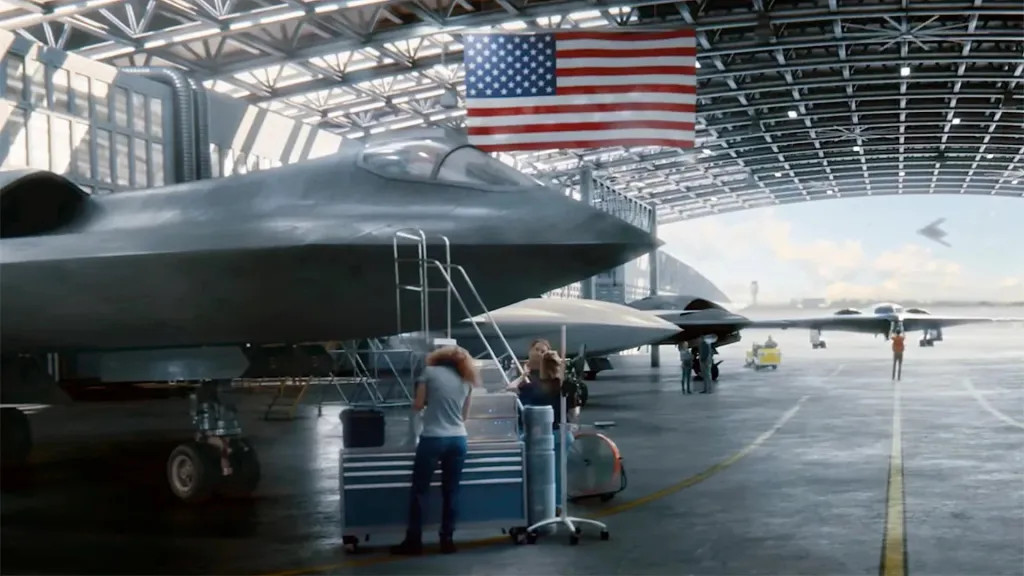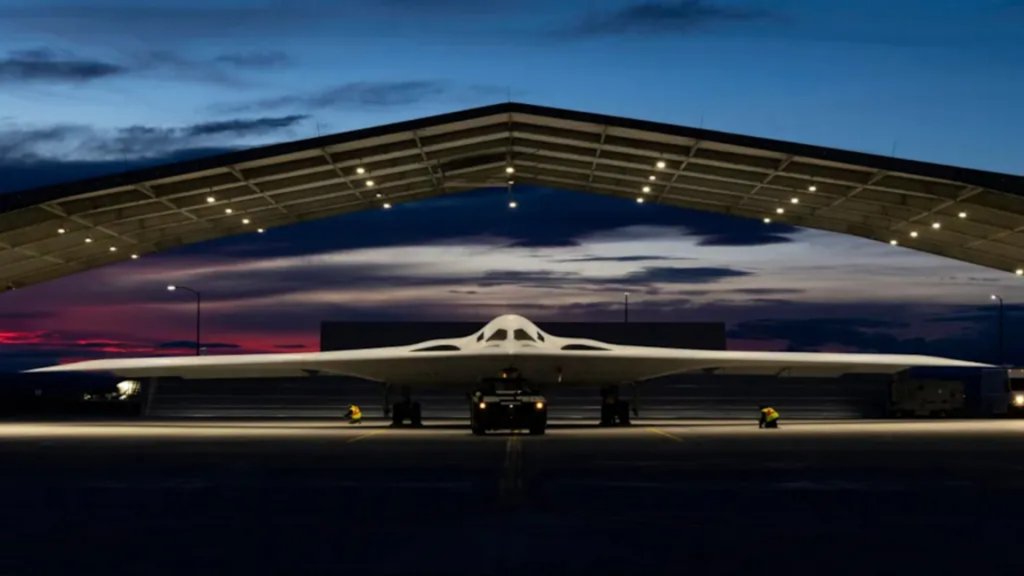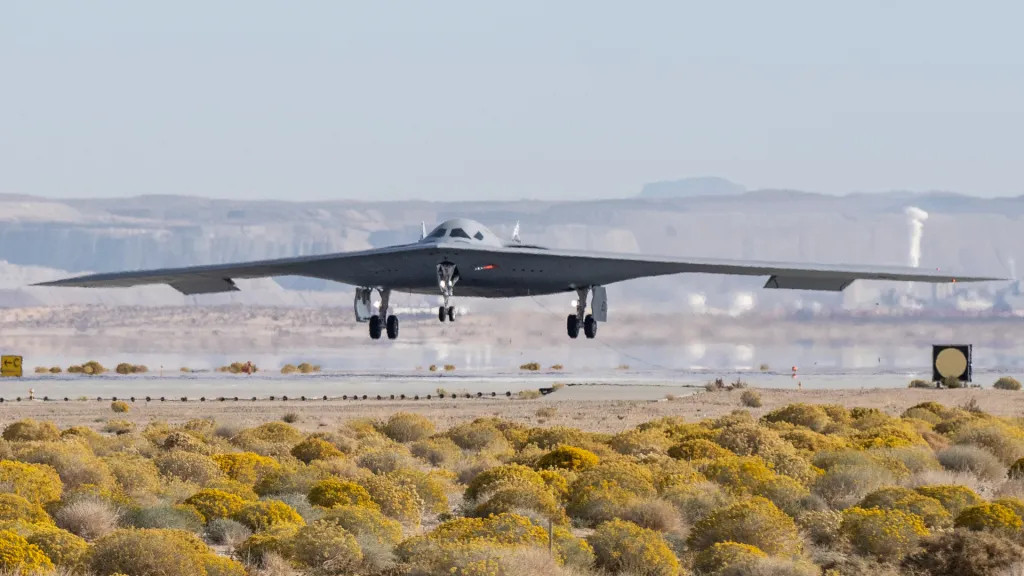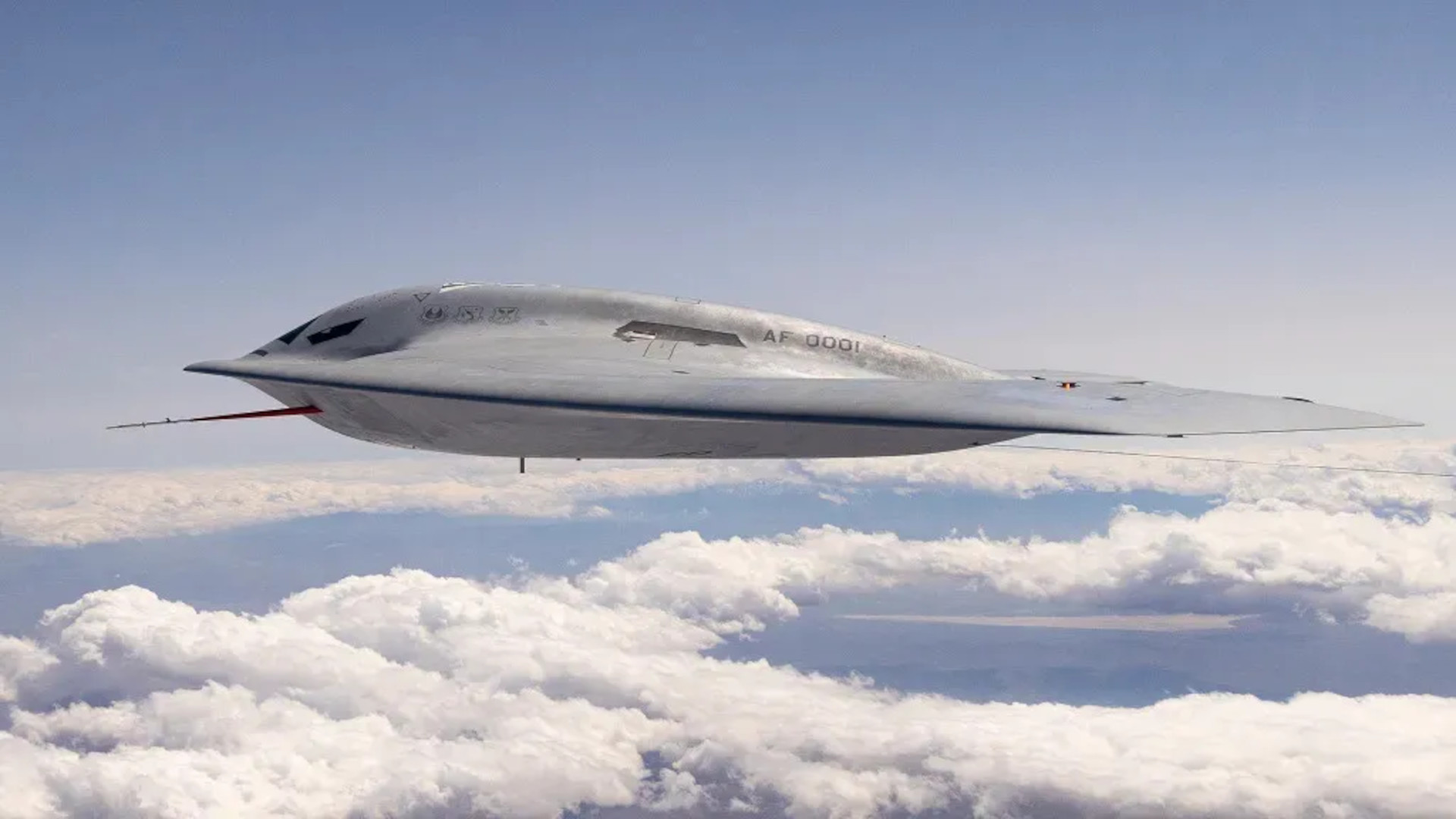The expected size of the U.S. Air Force’s B-21 Raider fleet could change as part of an ongoing force structure review, according to the bomber’s manufacturer Northrop Grumman. The company is also expecting to get another B-21 low-rate production contract by the end of the year, which follows steadily progressing ground and flight testing work.
Kathy Warden, Northrop Grumman’s CEO, talked about the present state of the B-21 program and her company’s expectations for the future during a quarterly earnings call earlier today. The Air Force’s publicly stated plan has long been to buy at least 100 Raiders, but there have been discussions for years now about the possibility of the service acquiring significantly more of the bombers.

“I think that’s exactly what the Air Force is looking at,” Warden said. “They are undertaking a force structure design review and the Secretary [of the Air Force Frank Kendall] has been open about looking at the various options they have for increasing their force size, and has talked specifically about NGAD, and we know that B-21 is in the mix, as well.”
Warden was responding to a question about how any fallout from the Air Force’s reassessment of its plans for a new crewed sixth-generation stealth ‘fighter’ as part of the larger Next Generation Air Dominance (NGAD) initiative might impact the B-21 and other programs. The NGAD combat jet effort’s future is now very uncertain amid a deep re-examination of what the aircraft might be expected to do as a part of efforts to drive down costs, as you can read more about here. Broader concerns about the outlook for U.S. defense budgets in the coming years, as well as increasing costs for other top-priority efforts, especially the ballooning price of the LGM-35A Sentinel intercontinental ballistic missile program, have also factored into the NGAD review.
Northrop Grumman notably voluntarily withdrew from the competition to develop the NGAD combat jet, at least as a prime contractor, last year.

“It would be premature for me to suggest where that force structure review will end up,” Warden added during the call today. “I do think in the coming months, we may get a better indication from the Air Force as to how they’re thinking about B-21 quantities in the long run.”
The War Zone has reached out to the Air Force for more information.
New questions about the Air Force’s expected B-21 fleet size had already emerged earlier this year. Gen. David Allvin, the service’s Chief of Staff, caused a stir at a Congressional hearing in April when he declined to commit to buying more than 100 Raiders and talked about his service already looking to future capabilities to augment the bombers. A key known requirement for the B-21 already is the ability to operate in a pilot-optional mode.
“It [the B-21] certainly is the future of our bomber force. … 100 is the program of record,” Allvin said at the time. “I think we’re not going to reach that number until probably the mid-2030s and beyond. And before we commit to that as being the platform beyond that, I think there are other technological advancements that we would see to be able to augment that and have a better mix.”
The War Zone has previously explored in detail how the Air Force looking beyond the B-21 now makes good sense. The air combat realities that the entire U.S. military has to contend with continue to rapidly evolve, especially when it comes to future planning around a potential high-end fight, such as one in the Pacific against China. Advances in the uncrewed aviation and artificial and machine learning sectors are particularly significant factors in these broader developments.

It is worth noting here that there is the potential that a review of the B-21 force structure plans, especially in relation to what could happen with the NGAD combat jet, might actually lead to an increase in Raider acquisitions. The possibility of B-21s, or a variant or derivative of that design, supporting NGAD-related air dominance missions is something The War Zone and Air Force officials have raised in the past.
“In the short run, we may remain very focused on delivering them optionality, the performance that we are delivering gives them a capability that is in production now that is well below the cost targets for the platform, and we believe that that’s the role of industry to get the government options as they think about their force structure,” Northrop Grumman’s Warden also said during today’s earnings call.
Northrop Grumman has delivered at least one of six pre-production B-21s and has begun work on the first low-rate initial production (LRIP) lot of Raiders. The company is expecting to get a contract for the second LRIP lot in the fourth quarter of 2024.
“We have no change to pricing,” Warden said today. “We are continuing to perform… in alignment with the plan that we have laid out for the B-21 and I’m very proud of that team. It’s quite a remarkable accomplishment.”
In January, Northrop Grumman had disclosed a loss of nearly $1.2 billion on the B-21 program and its expectation that it would take a financial hit on each of the first five LRIP lots. “Macroeconomic disruptions,” which could include higher-than-expected inflation and other broader economic factors, were cited as the cause of the losses. Though the exact current estimated unit cost of the Raider is unknown, Northrop Grumman continues to say it is under the Air Force’s target of $550 million in Fiscal Year 2010 dollars, or around $793 million when adjusted for inflation.

“The B-21 program has also made solid progress in achieving ground and flight testing milestones on the development contract, and is continuing to execute the aircraft production contract in line with our estimates,” Warden added today.
Northrop Grumman and the Air Force had already provided a substantial update on B-21 testing activities, including work using two non-flying ground test articles, around the Air & Space Forces Association’s main annual conference back in September. Officials at that time highlighted how the tempo of flight testing using the initial pre-production Raider had increased to two flights per week.
The Air Force’s publicly stated goal remains to begin fielding B-21s operationally before 2030, with Ellsworth Air Force Base in South Dakota slated to be the first base to host combat-coded Raider squadrons. Additional B-21 squadrons are set to be based at Whiteman Air Force Base in Missouri, the current home of the B-2 Spirit stealth bomber fleet, and Dyess Air Force Base in Texas.
There are now new questions about exactly what the full B-21 force layout might look like, even as testing and initial production of the bombers are expanding.
Contact the author: joe@twz.com
